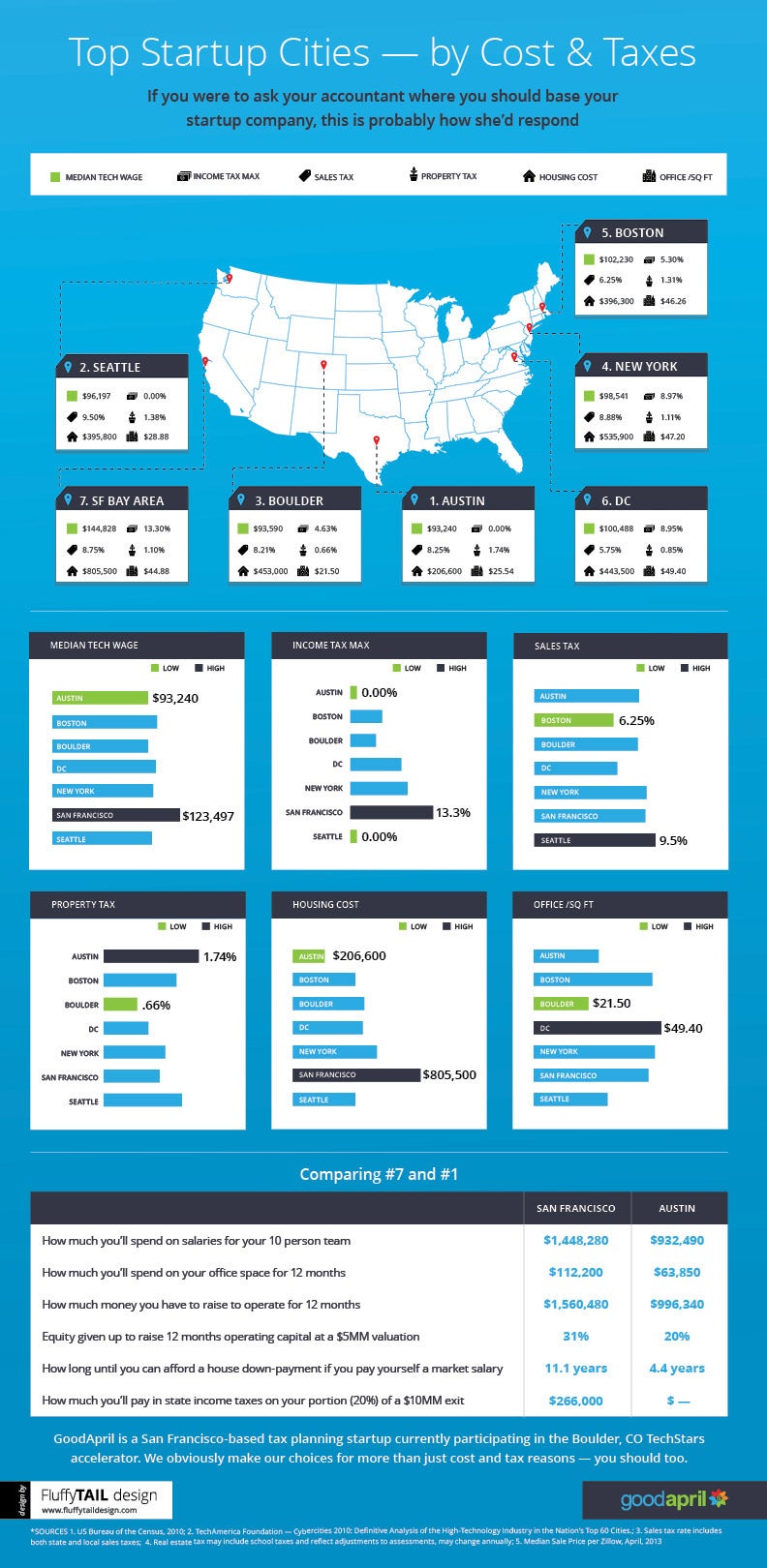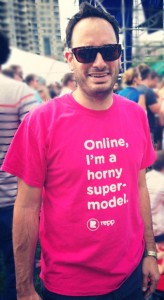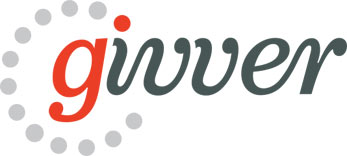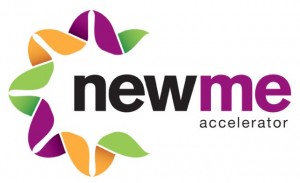Here at Nibletz, we’ve long known the benefits of starting up “everywhere else.” Silicon Valley gets so much press–and they have certainly been at the top for a long time–but we know that the hottest new companies of this century will come from outside the Valley.
And now we have an infographic to back us up!
GoodApril is (ironically) a San Franciso-based tax-planning company and a startup themselves. In conjunction with Entrepreneur, they ranked the 7 hottest startup scenes in America on 5 measures:
- median tech-employee earnings
- max personal income tax
- property tax
- cost of housing
- cost of office space
There are some people who argue that these factors don’t affect the decisions of people you actually want. But, we’ve met plenty of great entrepreneurs over the years who definitely understand the benefits of low cost of living. And they know that employees can work from anywhere.
So, you’re looking to move you’re startup. Where should you go?
According to the GoodApril rankings, Austin, TX is the best place to build a new company. San Francisco? Well, by these metrics, the Valley is actually the worst place to start your new company, despite the concentration of talent and VC money. In a blog post on GoodApril’s website, co-founder Mitch Fox tells this story:
I recently met an entrepreneur who’s had enough of the Bay Area’s living costs and taxes, and is moving to Austin. He launched his startup in San Francisco several years ago. Now he says, “The business case to move is just too compelling. Austin has everything we need at a much lower cost.” He’s had an office in Texas for three years. Now he’s going all-in. “This tax increase was a tipping point for me, but it’s not just about taxes. My employees can buy a large, three bedroom house in Austin for less than a one bedroom condo in Noe Valley.”
Several states don’t have income tax, including Florida, Texas, Washington, and Nevada. A lack of income tax makes life easier for employees as well as companies. And for many families with children, the pace of life outside the Valley is a better fit.
It may take awhile for any one of these scenes to overtake the Valley, but the more entrepreneurs see the benefits of “everywhere else” the quicker it will happen.
Check out the infographic from GoodApril and Entrepreneur for all the details.





















